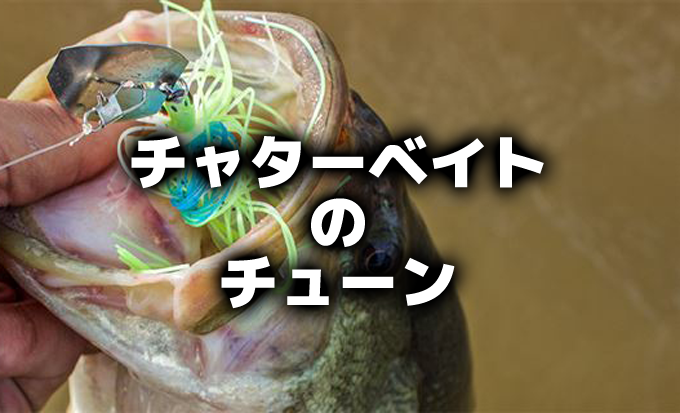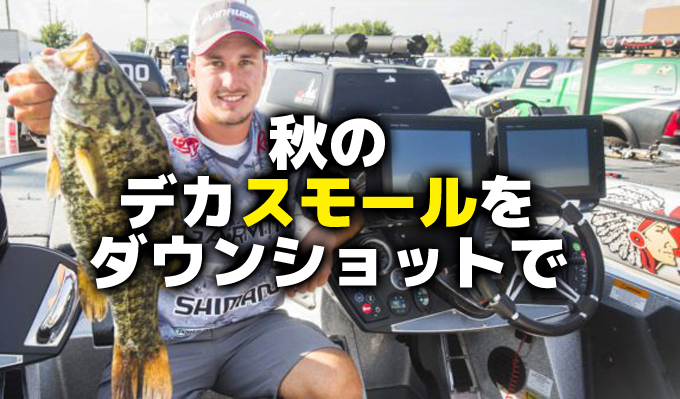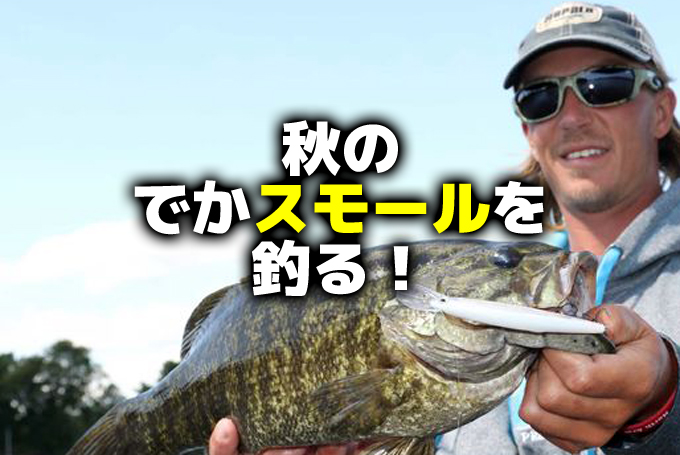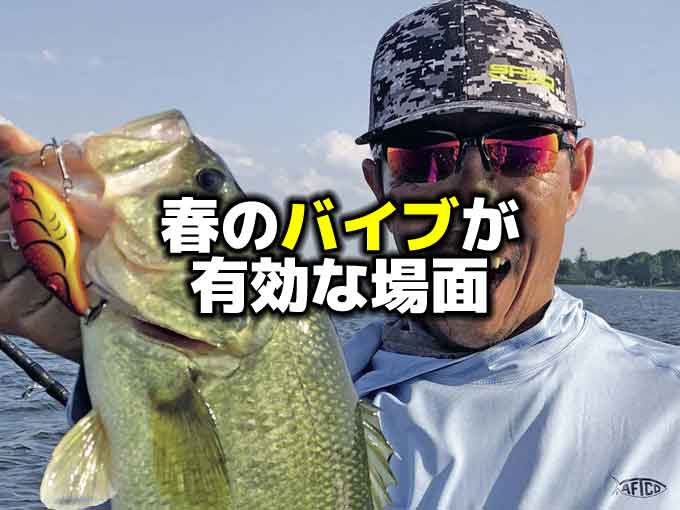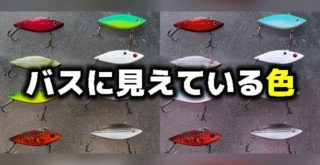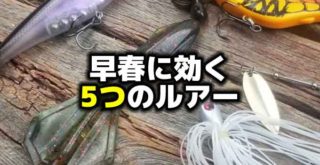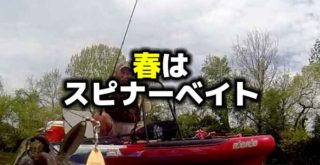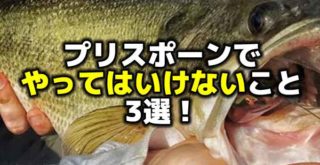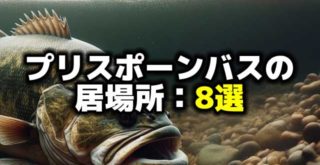川バスの釣り方:水位変動にアジャストする!
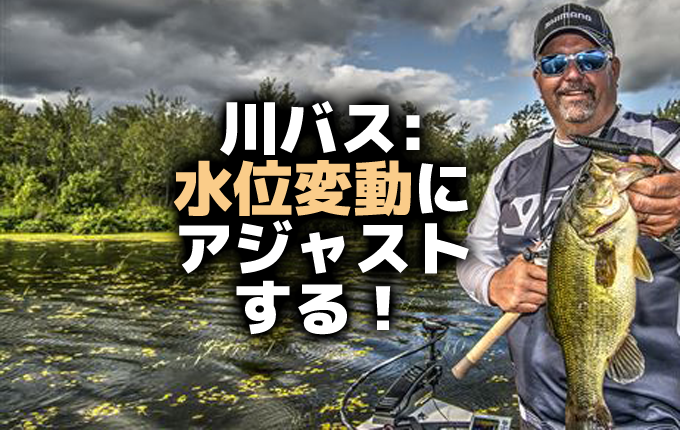
Photo by scout.com
こんにちは!店長の小山です!
本日は海外サイトより、”Fishing Backwaters on Fluctuating Rivers”という記事を引用してご紹介いたします。
引用先:scout.com”Fishing Backwaters on Fluctuating Rivers”By Tim Allard – Sep 2, 2015(海外サイトです)
皆さんは、川バスを釣ったことはございますでしょうか。
まだ日本でスモールマウスバスが確認されていなかった頃、バスは(ラージマウスバスは)、川では生息できないと言われていたんです。懐かしいですね(笑)。信じられないかもしれませんが、本当にそう思われていたんです。
今では誰もそんな風に思っていませんよね。
川バスの魅力は、流れの中で育った筋肉質のバスの引き味がいいところ、という風に言われています。確かにその通りだと思いますが、私は川そのものの魅力も大きいのではないかと思っています。
川といっても規模によりいろんなパターンがありますが、その特徴はなんといっても「岸の長さが長いところ」ですよね。近所の野池をイメージしてみると、岸の長さ(1周)は大きい野池でもだいたい約1キロくらいでしょうか。
湖の場合は、湖岸線としてはかなり長くなりますが、湖1周まるまる釣りができるところは珍しいのではないかと思います。
これに対して川にはかなりの長さがあり、その間に色々な変化もあります。流れ込み、反転流、逆ワンド、ブッシュ、テトラ…これが対岸を含めるとさらに倍の長さになりますから、釣りをしてても飽きないですよね。
こんな魅力的なフィールドである川ですが、ひとつの厄介な問題としてあるのが、「水位変動」です。川はちょっとした雨やダムの影響ですぐに増水減水が起きてしまい、そのたびにバスの居場所を見失ってしまうということが起きてしまうんですよね、少なくとも、私は(笑)
この記事は、多くの川を攻略してきたアメリカのバスプロ、クレイグ・リスター氏が、増水・減水した時の川バス(ラージマウスバス)の攻め方、ポイントなどについて具体的に解説しています。
ちょっと読んでみましょう。
増水:原因と影響
The larger the volume of water and the faster it enters the river, the more topsy-turvy a largemouth’s life becomes as water levels rise. On the rivers Lister fishes, sudden increases in water levels are typically the result of heavy rainfall more than from dam outflow.
Rain brings muddy runoff into a river. Perhaps the most temperamental system Lister fishes is the Ottawa River. The main channel can resemble chocolate milk after heavy rainfall. When this dirty, the Ottawa has a reputation for humbling even the region’s best bass anglers.
多くの水と速い流れが河川に流れ込んでくると、水位が上がってきて混乱したラージマウスが増えてきます。リスター氏が行く川での急な増水は、ダムの放水によるものではなく、大雨による結果になります。
雨は泥水が川に流れ込みます。 リスター氏が釣りをする河川の中で最も水位変動の個性が強いのはオタワ川です。 メインチャンネルは、大雨の後になるとミルクチョコレート色のようになるのです。 こうなってしまうと、オタワは最強のロコアングラーでさえもコテンパンにされるという評判を持っています。
増水時のホットスポット
“When a river rises, the most important thing to do is get out of the muddy water,” Lister said. “You’ve got to stay away from tributaries and get off the main channel. I go into back bays, looking for clearer water.”
Marshy, vegetation-rich backwaters are a river’s filtration system. It’s here, within these back bays, sloughs and connected lakes, where an angler has the best chance of finding clear water.
Stumps, rocks, cattails and other cover found within pockets of clearer water hold bass, especially if forage is present. These areas still tend to produce in high waters.
Stable water temperatures also make backwater areas more attractive. Heavy, cold downpours will lower a river channel’s temperatures and temporarily shutdown the bass fishing.
“I’ve seem the Ottawa’s main channel drop 10 degrees in a week,” Lister said. “Bass hate this kind of cooling temperature swings and will shut down.”
If you can’t fish backwaters, look for sheltered stretches of river away from and the main channel. The water opposite the channel behind points and bars is one place to explore. Vegetation filters sediment, making an inside grass line and the water behind it more productive.
「川の水位が上がったとき、最も重要なことはマッディーウォーターから抜け出すことだ」とリスター氏は語った。 「あなたは支流から離れ、メインチャンネルからも出て行かなくてはなりません。私は流れの無いワンドに入り、きれいな水を探します。」
水生植物の豊富な流れのない部分は河川の濾過システムです。こういったワンド、沼地、湖への水路などには、釣り人が澄んだ水を見つける最高の可能性があります。
綺麗な水のあるスポットにスタンプ、岩石、ガマや他のカバーがあり、特にベイトが存在する場合はバスをストックします。こういった場所は増水時に有効になる傾向があります。
安定した水温はまた、水の動かないエリアをより魅力的にします。冷たい大雨は河川の水温を下げ、一時的にバス釣りはシャットダウンとなるでしょう。
「オタワ川のメインチャンネルが週に5℃ほど下がったようだ。バスはこのような冷却温度の変動を嫌い、シャットダウンするでしょうね。」とリスター氏は言いました。
流れの無い場所の魚を釣ることができない場合は、メインリバーから離れた川の流れをさえぎる地形変化を探してください。岬や中州の下流の反転流はサーチする場所の1つです。植物も泥水をろ過し、ウィードのインサイド(岸側)とその周辺の水域でより釣れやすくします。
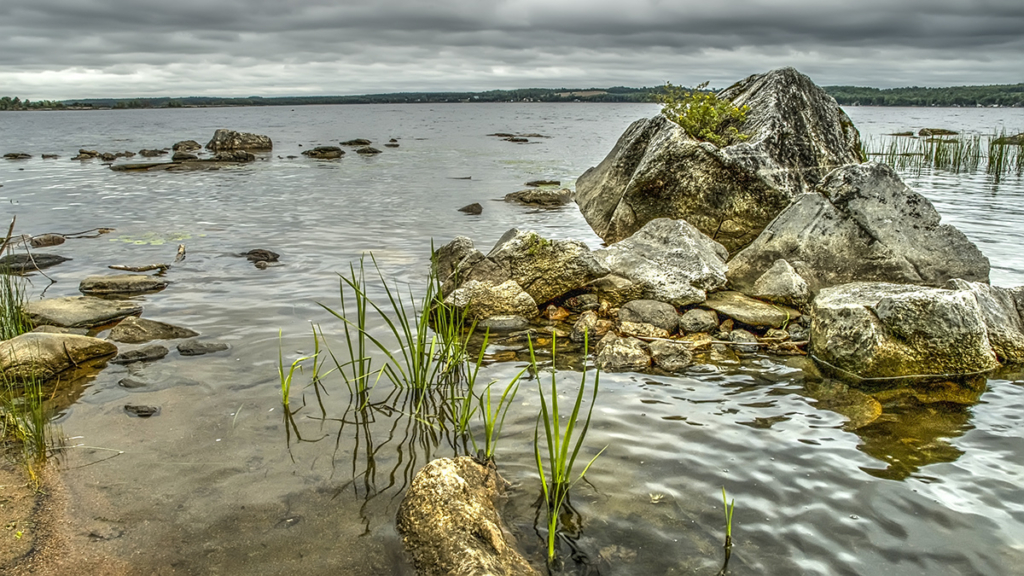
Photo by scout.com
増水時の5つの戦略
1. Fish closer to the bank
“When high water floods shorelines, suddenly a bunch of new critters become part of the food web,” Lister said. “Bass that were shallow will move closer to shore to eat snakes, rodents and frogs. Fish tuck into flooded timber and other areas where there usually isn’t water. Don’t be fooled. Not all bass will head ultra-shallow when the water rises. A good rule of thumb is to start fishing on the outside edges of shallow cover, making your way to the bank.”
2. Start with search baits
“Bass can be anywhere the first few days of high water, so I use reaction baits to find them,” Lister said. Top choices are bladed swim jigs, buzzbaits, spinnerbaits soft-bodied frogs, and swimbaits. Lister likes the responsiveness of G. Loomis’ E6X swimbait and crankbait rods for several of these presentations.
3. Think white and bright
Use white, bone and pearl baits in stained or muddy water. Lister finds largemouth key-in on these shad-based hues in dirty conditions.
4. Go slow
When thick cover demands a slow, methodical approach, Lister pitches plastics. He’ll use a Texas-rigged 4 or 5-inch crayfish, an 8-inch lizard or a 6-inch creature bait. A 1/4- to 1/2-ounce bullet weight is used to provide a slow fall. The goal is to give a bass plenty of time to react in the dingy water.
5. Try weightless
Lister often Texas-rigs a Jackall Cover Craw backwards without a weight. The bait falls slow and glides outwards as it sinks, which helps work more water underneath cover. Using a G. Loomis GLX 852S JWR spinning rod, Lister tosses and skips the weightless bait around and under cover. A 4000 sized Shimano Stradic CI4+ spools the 20-pound PowerPro Zero Impact and 20-pound P-Line fluorocarbon leader.
1:バスは岸に寄る
「水位が岸まであふれてくると、突然、別の生き物たちが食物連鎖の一部になります」とリスター氏は語った。 「シャローのバスは蛇、ネズミ、カエルを食べるために岸に近づくでしょう。水没した木材や、通常は水がないエリアにバスは入り込みます。だまされてはいけません。水位が上がっても、すべてのバスがスーパーシャローに行くわけではありません。いい立ち回り方としては、シャローカバーのアウトサイドエッジから釣りを始めてから、バンクを攻めることです。
2:サーチベイトからスタートする
「増水から数日の間バスはどこにいるかは、サーチベイトを使って探し出します」と、リスター氏は言いました。一番の選択肢は、チャターベイト、バズベイト、スピナーベイト、中空フロッグ、スイムベイトで、リスター氏はこれらのプレゼンテーションをするために、G.ルーミスのE6Xのスイムベイト、クランクベイトロッドの感触が好きです。
3:白や明るい色を
ステインからマッディ―ウォーター下ではホワイト、ボーンカラー、パールのルアーを使用してください。リスター氏は、水の汚れた状態ではこれらの色のシャッドカラーを基準にラージマウスを探すキーにしています。
4:スローに
ぶ厚いカバーなどで遅く、丁寧なアプローチが要求されるとき、リスター氏はワームでピッチングをします。彼は4〜5インチのクロー系、8インチのリザード、または6インチのクリーチャーベイトをテキサスリグで使用します。 1/4~1/2オンスのバレットシンカーで、スルーフォールするようにします。濁った水の中でも反応するのに十分な時間をバスに与えることが目的です。
5:ノーシンカーを試す
リスター氏はたいてい、ジャッカルのカバークローをテキサスリグで後ろ向きに這わせます。ワームはゆっくりとフォールし、沈みながら外側に向かってスライドするので、カバーの下側をより多く攻めるのに役立ちます。リスター氏は G.ルーミスGLX 852S JWRスピニングロッドを使用して、ノーシンカーワームをカバーの下やまわりにスキッピングで入れます。シマノ・ストラディック CI4+の4000番に、20ポンドのPowerProゼロ・インパクトPEラインと20ポンドのP-ライン・フロロカーボンリーダーを巻いています。
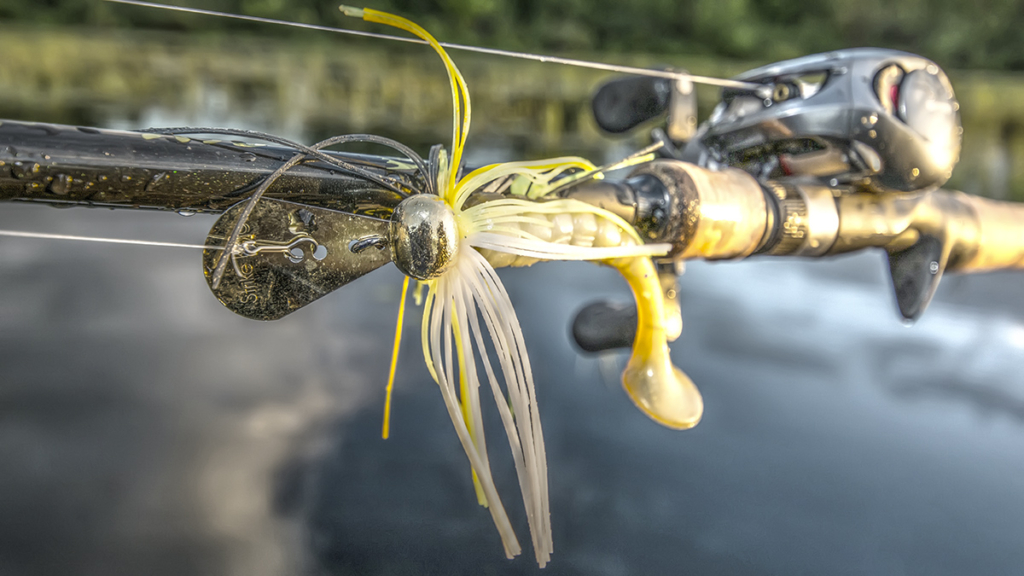
Photo by scout.com
減水:原因と影響
“When the water drops, bass are more predictable than when it’s high,” Lister said. “They pull away from the shore and shallows to feel safe and to follow the food source. Many anglers don’t realize this can happen in a day when dams lower water levels.”
It all starts at the boat launch before taking to the water. Lister looks for water lines on rocks, docks, bridge pilings and the boat ramp cement pad. Take note if the base of cattails are yellow or green. Yellow indicates low water for a period of time. Increased current flowing out of backwater areas is another indicator water levels are dropping.
At the end of the day, Lister compares his morning dock data to the afternoon water levels. Several times on large rivers controlled by hydro dams, he’s noticed a huge difference in water levels.
“In the morning, the water has overflowed into the parking lot surrounding the dock area,” Lister said. “At the day’s end the water has declined making it a dry walk off the dock to the truck.”
「減水の時、バスは増水時よりも予測しやすくなります。 彼らは危険を察知して岸や浅瀬から離れ、ベイトに依存します。多くの釣り人は、ダムが水位を下げる日にこのことを認識していないのです。」リスター氏は言います。
それはボートのランチングから始まり、水に浮かぶ前から始まっています。リスター氏は、岩、桟橋、橋桁、ボートスロープなどの水面の痕跡を見ます。 ガマの根元が黄色か緑色かどうかにも注意してください。黄色は一定期間水が低いことを示しています。流れの淀みから出ていく流れの増加も、水位が低下している指標となります。
その日の終わりに、リスター氏は朝の桟橋の水位を午後の水位と比較します。ダムによって管理されている大河川で数回ほど、水位に大きな違いがあることに気づきました。
「午前中、桟橋周辺の駐車場には水が溢れていた。 1日の終わりには、水位はトラックが桟橋へ向かう道が乾燥するほど減少していた」
減水時に狙う場所
The outside edge and points of floating mat, arrowheads, lily pads and grass beds are the first places Lister fishes during low water. These deep, vegetation edges act as a boundary line to collect bass leaving the shallows.
“Also good are flats adjacent to where largemouth were holding prior to water levels dropping,” Lister said. “Flats are where the baitfish are going to go in low water, and the bass follow them.”
Old creek channels are another low water location. Expect bass to collect around timber, rocks and other features along the trough.
リスター氏が減水している時に魚を釣る最初の場所は、浮草でできた岬、水草、リリーパッド、グラスベッドです。 これらの深い水生植物のエッジは、浅瀬を離れるバスを寄せる境界線として機能します。
「水位が低下する前にラージマスがいた場所に隣接するフラットも良い」とリスター氏は語った。 「フラットは、ベイトフィッシュが減水時に入る場所で、バスもそれに続きます」
古いクリークチャンネルはもう一つの減水時の場所です。 谷(チャンネル)に沿っている木材、岩などの特徴にバスが集まることを期待してください。
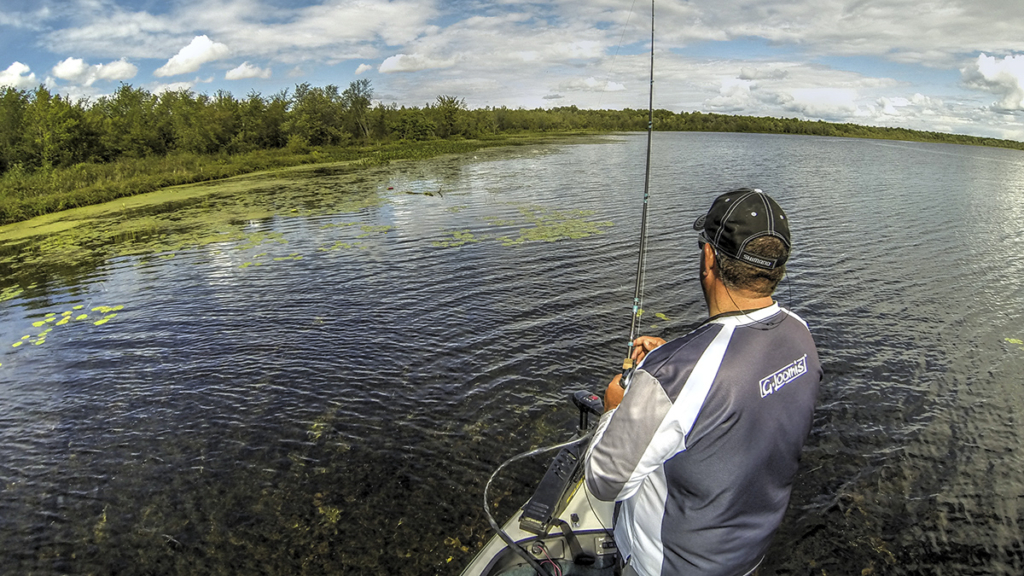
Photo by scout.com
減水時の4つの戦略
1. Be thorough
River largemouth can hold very tight to cover because it creates a current break. In northern rivers, bass also hug cover to avoid being eaten by northern pike and muskie. Given this, it’s important to fish spots thoroughly.
“It has happened many times,” Lister said. “I’ve made a bunch of pitches to an area, and I think I’ve worked it over pretty good. Then I make one more pitch to a slightly different spot, and I hook a largemouth.”
2. Don’t discount small cover
On backwater flats, big largemouth will hold on compact pieces of cover, such as isolated lily pads or a patch of reeds. While they may look unassuming, you need to cast to these remote pieces of cover.
“Something as small as a stick can hold a 5 pounder,” Lister said. “This subtle stuff is what you’ve got to look for on flats.”
3. Work the current
Dropping water levels change current dynamics in backwaters. When water’s being sucked out of a bay, fishing current breaks around these outflow areas is a good strategy. Bass will position in current breaks, waiting to ambush prey swept-up in the fast water.
4. Cast a stick bait
When the chips are down, Lister casts a Texas-rigged 5-inch stickbait during low water. Edges of emergent vegetation, grasslines, stump fields, flats, creek channels and rock piles are all spots Lister fishes with this soft bait.
The next time water levels change on your favorite river, remember Lister’s tips and the “in-when-up, out-when-down” principle. Do this, and you’ll catch a lot more largemouth bass from rivers during fluctuating water levels.
1.徹底的に
川のラージマウスは、流れをさえぎるカバーに非常にタイトに付きます。アメリカ北部の川では、ノーザンパイクやカワカマスに食べられることを避けるためにバスはカバーに寄り添います。これを考えると、そのスポットを徹底的に釣ることが重要です。
「もう何度もやることです」とリスター氏は語った。 「私はあるスポットにたくさんピッチングで入れました。かなり上手くやったと思う。それからもう少しだけずらした場所にピッチングで入れると、ラージマウスをフッキングしました。」
2.小さなカバーを甘く見ないでください
流れのないフラットでは、大きなラージマウスは、孤立したリリーパッドや葦のパッチなどのコンパクトなカバーにつきます。それらは控えめに見えるかもしれませんが、あなたはこれらの隔離されたカバーに投げ込む必要があります。
「細い棒のようなカバーでも、ビッグバスがついていることもあります」とリスター氏は語った。 「こんな微妙なものを、フラットで探さなければなりません。」
3.流れの働き
水位が下がるということは、流れのない場所の流れを変化させるということです。水がワンドから吸い出されているとき、流れをさえぎるものの周りで釣りすることは良い戦略です。バスは遮られた流れの場所に位置し、速い水に流されてくる獲物を待っています。
4.スティックベイトを投げる
どうしようもなくなってしまったら、リスター氏は減水時に5インチのスティックベイトをテキサスリグにしてキャストします。流されてきた草のエッジ、ウィードエッジ、スタンプ、フラット、クリークチャンネル、石積みは、リスター氏がこのリグで魚を狙うときのすべてのスポットです。
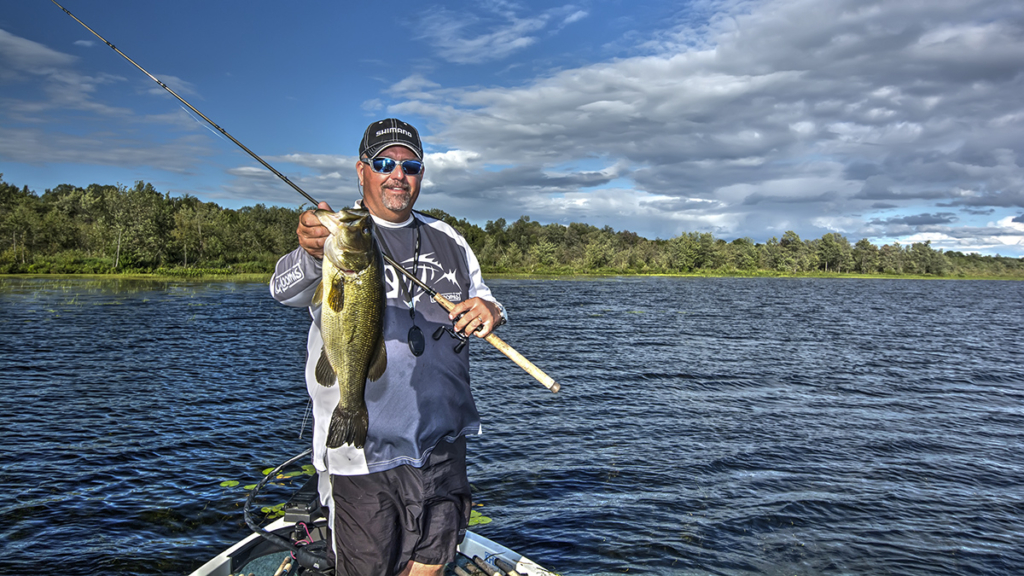
Photo by scout.com
あなたの好きな川で次に水位変動があるとき、リスター氏のヒントと「増水したら岸、減水したら沖」の原則を覚えておいてください。これを行うと、変動する水位の中で、川からより多くのラージマスバスを捕まえることができます。
いかがでしたか。
広大なアメリカ規模の川の話ですから、日本の川をイメージすると若干合わない部分があるかと思いますが、イメージの中で上手く日本の河川とすり合わせてみてみれば、言っていることが見えてくるのではないかと思います。
あと、ひとつ困ってしまうのが、「バックウォーター」の意味です。
日本でいうところのバックウォーターは「奥の水域」という意味で使われていて、ダムなどの流入河川とか川筋の上流みたいな感じで使われていることが多いのですが、本来の意味は「川や湖やリザーバーにおいて、流れるべきところが流れてないところ、例えば川やリザーバーなら逆ワンドや岸の小さな窪みや淀みあるいは反転流や逆流しているところ、湖なら湖流のない沼地になっているようなところ」などを指します。なぜ日本に間違った形で伝わってしまったのかはわかりませんが、いまさら直しても仕方ありませんので、実際はこのままでいいでしょう(笑)。言葉とは本当に難しいものですね。
そんなわけで、この記事が台風や季節の雨などで上下する川の水位にお悩みのアングラーの方の参考になれば幸いです。
ただ、川の増水は非常に危険を伴います。釣りをするレベルの増水かどうかはしっかり判断して、安全第一でお願いしますね!
それでは、また。
毎度ありがとうございます!





